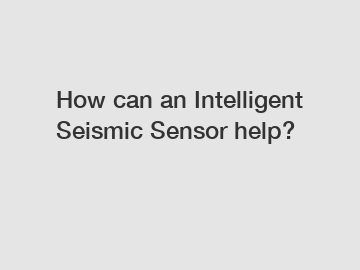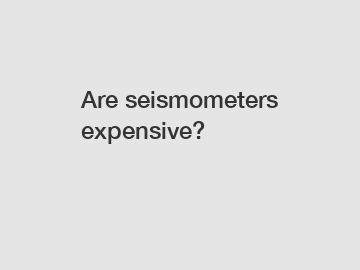Revolutionizing Seismic Safety: Are Smart Solutions Essential?
Revolutionizing Seismic Safety: Are Smart Solutions Essential?
Seismic activity, including earthquakes and aftershocks, poses a significant threat to infrastructure, buildings, and human lives around the world. In recent years, there has been a growing focus on developing smart solutions to improve seismic safety and minimize the impact of these natural disasters. But are these smart solutions essential? Let's delve deeper into this question.
Understanding Seismic Safety.
Seismic safety refers to the ability of structures and infrastructure to withstand the forces exerted by earthquakes without collapsing or sustaining significant damage. Traditional methods of ensuring seismic safety include incorporating design and construction practices that account for the expected ground motions in a specific region. However, these methods are not foolproof and may not always be able to prevent catastrophic damage during a seismic event.
The Role of Smart Solutions.
Smart solutions for seismic safety leverage cutting-edge technologies such as sensors, IoT (Internet of Things) devices, and artificial intelligence to enhance the resilience of buildings and infrastructure. These solutions can provide real-time data on the structural health of buildings, monitor ground movements, and even automatically activate safety protocols in the event of an earthquake.
Benefits of Smart Solutions.
1. Early Warning Systems: Smart seismic sensors can detect the initial waves of an earthquake before the intense shaking occurs, providing crucial seconds to evacuate buildings and take cover.
2. Structural Health Monitoring: IoT devices installed in buildings can continuously monitor their structural integrity and alert maintenance teams if any issues are detected.
3. Adaptive Building Design: Artificial intelligence can be used to analyze data from past seismic events and optimize building designs to better withstand future earthquakes.
Challenges and Considerations.
While smart solutions hold great promise for revolutionizing seismic safety, there are several challenges that need to be addressed. These include the high costs associated with implementing these technologies, the need for specialized skills to operate and maintain them, and concerns about data privacy and security. Additionally, ensuring that these solutions are accessible and affordable for all regions prone to seismic activity is crucial.
The Way Forward.
Despite the challenges, the adoption of smart solutions for seismic safety is essential to minimize the impact of earthquakes on society. By investing in research and development, fostering collaboration between industry stakeholders, and creating regulatory frameworks to support the deployment of these technologies, we can significantly enhance the resilience of our infrastructure and communities.
In conclusion, smart solutions are indeed essential for revolutionizing seismic safety and mitigating the risks posed by earthquakes. By harnessing the power of technology and innovation, we can build a more resilient future for generations to come.
Contact Us.
If you would like to learn more about smart solutions for seismic safety or explore how your organization can benefit from these technologies, please don't hesitate to contact us. Our team of experts is here to help you navigate the complexities of seismic risk management and find the right solutions for your needs.
If you want to learn more, please visit our website Cost Effective Seismic Data Storage, Wireless Seismic Inc, What Is Geophone.
Related Articles









Comments